Satirically, there are few locations in Dublin extra alive than Glasnevin Cemetery. Domhnall O’Donoghue delves into the historical past of Eire’s largest burial place.
* This text was initially printed in Eire of the Welcomes journal. Subscribe right here.
Spanning 124 acres – and only a quick bus journey north of the town centre – this graveyard is synonymous with heroic figures, instrumental in Eire’s journey in the direction of emancipation. There’s a wealth of political titans buried right here – particularly, Daniel O’Connell, Michael Collins, Eamon de Valera, Charles Stewart Parnell and Countess Markievicz.
Glasnevin can also be the ultimate resting place of over 1,000,000 folks, together with many Irish Famine victims.
“Glasnevin Cemetery tells the story of Eire by means of the turbulent years of resurgent nationalism and the primary 100 years of unbiased statehood,” explains Luke O’Toole, Head of Growth of Glasnevin Belief.
“Political chief Daniel O’Connell based the cemetery in 1832,” says native man, Dara McCarthy – an enthralling, freelance information with distinctive information of the realm. “Its unique identify was Prospect Cemetery, known as after the small townland close by.”
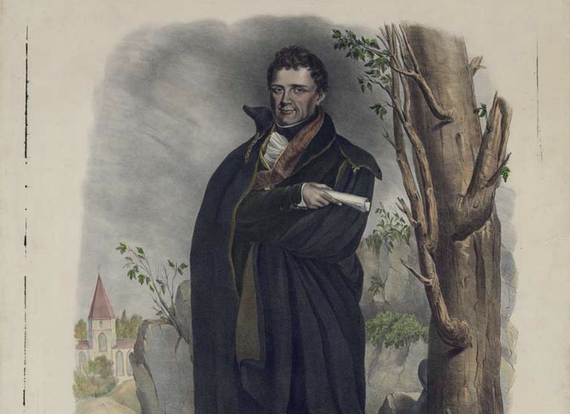
“Political chief Daniel O’Connell based the cemetery in 1832.”
At the moment, Eire was disentangling itself from Penal Legal guidelines, initially imposed to drive Irish Catholics and Protestant dissenters to simply accept the established Church of Eire. Via O’Connell’s campaigning, these oppressive legal guidelines had been successfully abolished in 1829.
Earlier than that, it was unlawful for Catholics to be buried – they’d no cemeteries of their very own – and it had turn into commonplace follow for Catholics to conduct restricted funeral providers in Protestant churchyards or graveyards.
Regardless of this background, Dara reveals that Glasnevin Cemetery has, surprisingly, at all times been non-denominational.
“Many individuals felt that Glasnevin ought to be a Catholic cemetery, however O’Connell stated no – arguing that that might be discrimination and precisely what the Protestants did to Catholics, Presbyterians and Methodists.”
Strolling by means of the cemetery, and receiving rain cowl from the towering yew bushes – which the Celts related to loss of life – I’m instantly struck by the big variety of gravestones and sculptures. Austere high-stone erections sit alongside elaborate Celtic crosses – completely complemented by the fashionable Italian marble choices.
* This text was initially printed in Eire of the Welcomes journal. Subscribe right here.
Tower of energy
Our first cease is the skyscraping O’Connell Tower, constructed to commemorate the cemetery’s founder and certainly one of Eire’s most outstanding political figures, Daniel O’Connell.
Designed by famed architect Patrick Byrne, and utilizing granite from the south Dublin suburb of Dalkey, work commenced on this iconic landmark in 1854 – seven years following O’Connell’s loss of life. Taking 16 months to finish, the development value spiraled to £18,000 – or €15 million immediately.
“The design was based mostly on Celtic spherical towers, which had been bell towers created by monks,” Dara explains. “This tower is constructed on prime of a mound, formed as Newgrange – so you could have Celtic and Catholic influences collectively.”
O’Connell was on a pilgrimage to Rome on the time of his loss of life, hoping that the hotter climates would alleviate his bronchitis. Nevertheless, he suffered a cerebral hemorrhage in Genoa and relinquished life in 1847.
The Kerryman’s ultimate phrases had been: “My physique to Eire; my coronary heart to Rome; my soul to Heaven.” Based on Dara, his buddies took him actually.
“He was a lawyer, not identified to mince his phrases,” he reveals. “They put his coronary heart in a silver field and positioned it within the Irish School in Rome.”
The place O’Connell’s coronary heart is immediately stays a thriller, nevertheless.
Dara explains: “When the Irish School was shifting, they found that the center was gone. We don’t know what occurred to it.”
A lacking coronary heart isn’t the one drama related to O’Connell, post-death. Within the Seventies, a bomb exploded on the tower’s base, which Loyalists planted in retribution for the IRA blowing up Nelson’s Pillar in 1966.
Following intensive restoration, the tower, together with the crypt, was lately re-opened and boasts 360-degree panoramic views of the Truthful Metropolis.
Political giants
Charles Stewart Parnell – one other seminal determine in Eire’s journey to independence – is buried close-by in what was as soon as thought of poor floor. Chief of the Irish Parliamentary Celebration, Parnell died in 1891 in close to poverty, having been embroiled in an costly divorce scandal, which additionally derailed his formidable profession.
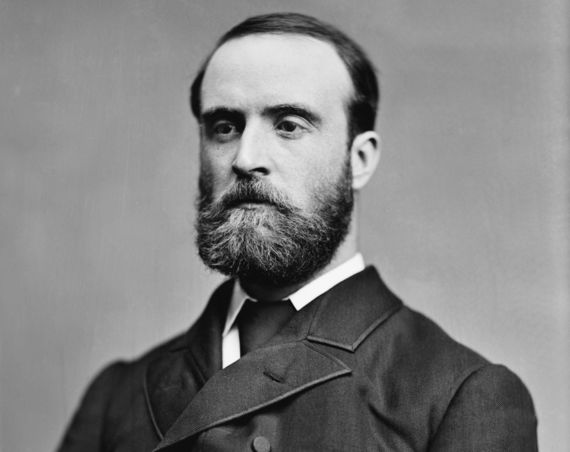
Charles Stewart Parnell
Nonetheless massively widespread with the Irish public, Parnell’s supporters satisfied Glasnevin Cemetery to bury him regardless of the restricted funds.
“Then, this space was poor floor, and no person wished to be buried right here,” Dara says. “By burying a well-liked chief in an unpopular a part of the cemetery meant those that revered him would need to be buried beside him.”
One such individual was James Joyce’s father, John, who labored as an election agent for Parnell. In reality, in Ulysses, arguably the world’s best e-book, Glasnevin Cemetery – or Prospect Cemetery because it was then identified – gives one of many backdrops. On Bloom’s Day, Dara reveals that Joycean followers – wearing costumes from Edwardian occasions – re-enact components of Ulysses right here.
One other facet of Parnell’s funeral might have been lifted straight from the pages of a novel. Reporting on behalf of the Freeman’s Journal was W.B. Yeats’ muse, Maud Gonne (who was later buried right here). She wrote that the second Parnell was lowered into the grave, a flash of sunshine illuminated the night time’s darkening sky.
“We thought she was exaggerating – or making it up as a result of she preferred Parnell,” Dara explains. “However, we checked with Dunsink Observatory, and there was a comet reported on the night time he was interred, so it was true!”
* This text was initially printed in Eire of the Welcomes journal. Subscribe right here.
Relaxation in peace
In 2009, Glasnevin Belief and the Commonwealth Conflict Graves Fee started figuring out the graves of Irish service personnel who died whereas serving within the Commonwealth forces throughout each World Wars. Two memorials are situated close to the principle entrance. Elsewhere, the Cross of Sacrifice marks the centenary of WWI.
Over 200,000 Irish folks fought for the British throughout WWI when Eire remained below their rule. Dara notes that whereas most enlisted for the paycheck; others hoped that Britain would reward their service by delivering their promise to offer Eire our personal parliament.
Dara says: “Initially, the troopers went away as heroes – sacrificing for his or her fellow man; making an attempt to safe the Irish parliament; making an attempt to get cash to pay for his or her households right here in Eire.
“However rather a lot modified in Eire throughout that point – notably the 1916 Rising the place the British military executed Irish leaders in Kilmainham Gaol, turning them into martyrs.”
Consequently, when Irish troopers returned from the battle, many considered them as traitors as a result of they’d fought for the then despised British.
“For People, the closest analogy could be Vietnam,” Dara muses. “You go away heroes, the nation modifications its thoughts, they arrive again, and it’s a really controversial subject.”
The Large Fella
The following grave is the cemetery’s most visited – and, as soon as once more, imbued in Irish historical past: it belongs to Michael Collins – the nation’s first de facto Prime Minister. The Corkman was instrumental in negotiating the 1921 Anglo-Irish treaty, which established the Irish Free State. Nevertheless, it fell in need of uniting the whole 32 counties on the island with six counties – Northern Eire – being excluded.
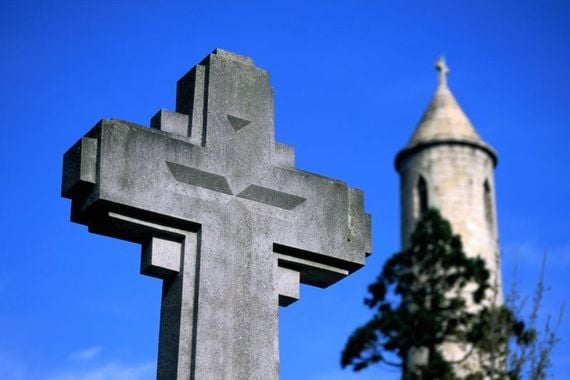
Michael Collins grave in Glasnevin.
Some considered the treaty as falling in need of reaching full independence for Eire; others felt it was a stepping-stone in carrying out that general objective. This profound divide resulted within the bloody Irish Civil Conflict the place Collins was gunned down in an ambush by anti-treaty forces. He was simply 31 years of age.
Understandably, his funeral was the most important in Irish historical past – virtually 500,000 mourners flocked to the streets.
“Even British troopers departing Eire paid their respects,” Dara reveals. “They recognised his navy genius.”
The romantics will enjoyment of realizing that the grave of Collins’ girlfriend, Kitty Kiernan, is nearly inside arm’s attain.
Better of the Irish
Nevertheless, Collins’ rival in the course of the Irish Civil Conflict can also be buried a stone’s throw away – Éamon de Valera. Saved from the firing squad in the course of the 1916 Rising, he later served a number of phrases as Head of Authorities and Head of State whereas additionally writing our structure.
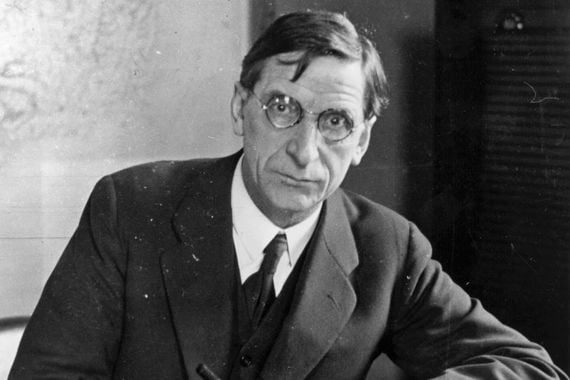
Éamon de Valera
“De Valera is a controversial and divisive determine in Irish historical past,” Dara says. “He was a outstanding man, very smart – but in addition fairly conservative, which is not as widespread in Eire. And his function within the Civil Conflict – the place he was anti-treaty – is taken into account controversial.”
Close by are the graves of different outstanding figures from Eire’s struggle for independence. Patrick Pearse’s stirring graveside oration at Fenian chief Jeremiah O’Donovan Rossa’s funeral was an important precursor to the 1916 Easter Rising simply months later.
Others buried on this plot embrace James Larkin, a founding father of the Labour Celebration, and former Minister of Protection, Cathal Brugha, who, regardless of being shot by the British over 20 occasions in the course of the 1916 Rising, survived by singing Irish nationwide songs. He was later killed in the course of the Civil Conflict.
Trailblazer Countess Markievicz – the primary girl elected to the British parliament in 1918, and the primary cupboard minister in European historical past – is laid to relaxation close by.
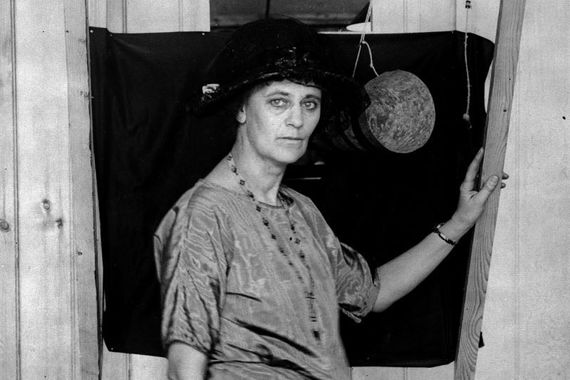
Countess Markievicz
“Whereas she got here from a really rich background, Countess Markievicz represented South Central Dublin, a really working-class a part of city,” Dara reveals. “The folks of Dublin beloved her – and he or she continues to be nicely regarded even immediately.”
Peadar Kearney, who wrote Eire’s nationwide anthem, can also be buried right here – as is his nephew, author and infamous drinker, Brendan Behan.
“Brendan famously stated he was a drinker with writing issues!” Dara jokes. “Individuals who like him get pints of Guinness from the Gravediggers close by – my favorite pub in Eire – and place it on his grave.”
Brendan wrote The Borstal Boy – a memoir documenting the three years he spent incarcerated in juvenile jail for being an IRA volunteer – and “The Auld Triangle”, a poem famously put to music by Luke Kelly, additionally buried right here.
* This text was initially printed in Eire of the Welcomes journal. Subscribe right here.
The graveyard shift
Different notable options within the cemetery are the excessive partitions and watchtowers. They had been constructed to discourage body-snatchers within the 18th and early nineteenth centuries – watchmen additionally had a pack of bloodhounds who roamed the grounds at night time.
“It was once unlawful to the touch a corpse below British legislation, which ran right here on the time,” Dara reveals. “The issue was: docs wanted to dissect our bodies so they may perceive anatomy.
“That created a black marketplace for useless our bodies. The place might you get a useless physique? The graveyard.”
With the assistance of a kid, shovel, hammer and noose, they might surreptitiously take away the useless our bodies earlier than promoting them to the medical faculties. Within the cemetery’s customer’s centre, The Metropolis of the Lifeless exhibition highlights this grave-robbing phenomenon.
“Earlier than COVID-19, we had already determined to place in place a serious new design of the indoor customer expertise,” Luke O’Toole tells me.
“The brand new expertise can be equally entertaining for these with a robust curiosity in Irish historical past, and those that need to hear attention-grabbing tales concerning the cemetery itself and the ‘strange’ folks buried right here.”
* This text was initially printed in Eire of the Welcomes journal. Subscribe right here.